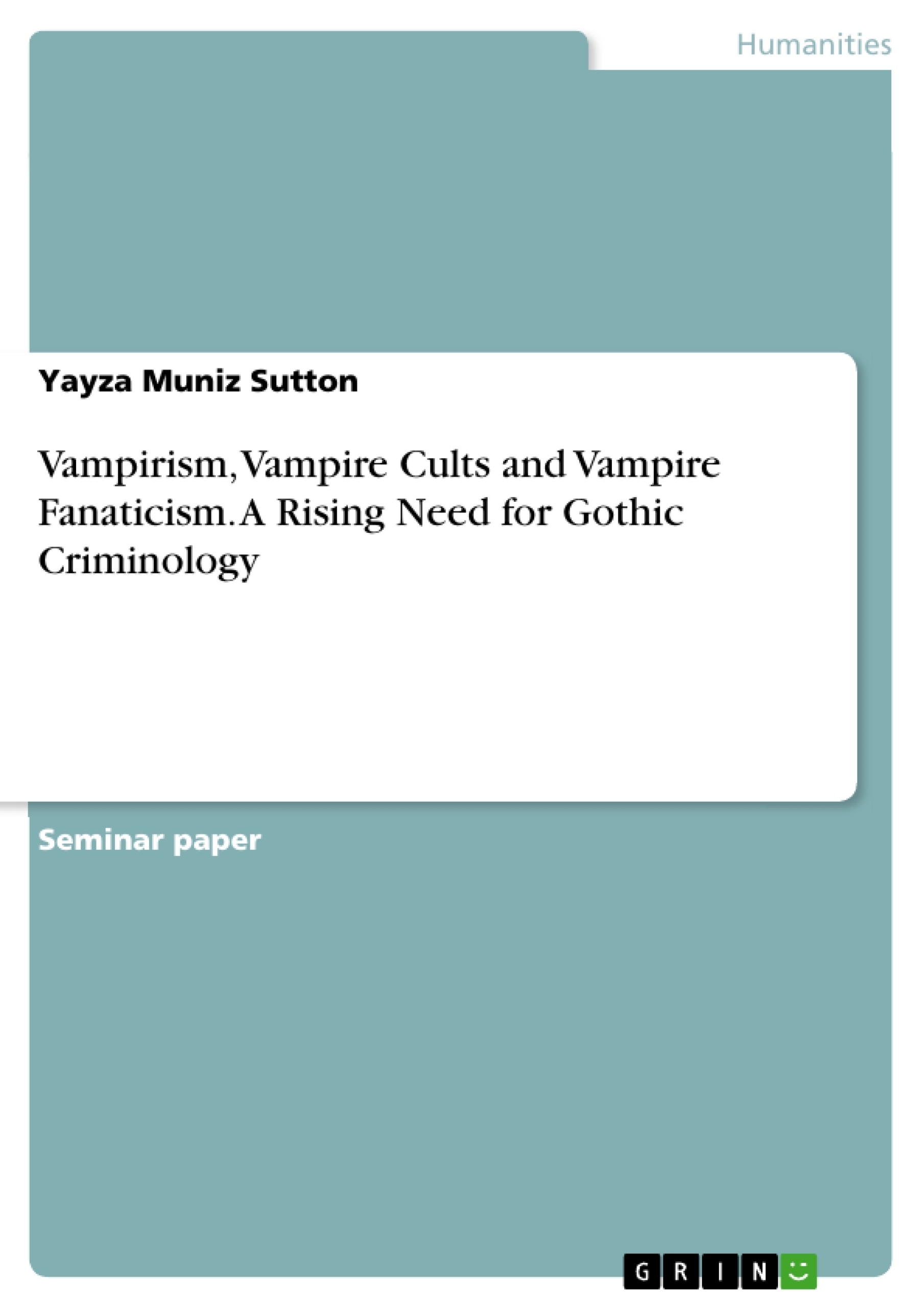In this paper there will be an in depth look into vampire fanaticism and cult TV, clinical vampirism in relation to mental illness, vampire cults which commit occult crimes, and gothic criminology.
Vampire Cults have been an issue in the United States for well over a decade. These cults have similar structures to that of other present-day cults and pose a hazard to society. With the rising popularity of supernatural beings in the media, dangerous fanatics have also risen in numbers over the years. Yet, occult crime scenes are not as understood or thought of as an internal threat.
Table of Contents
- I. Problem
- II. Factors Bearing on the Problem
- Vampire fanaticism and Cult TV
- Clinical vampirism in relation to Mental Illness
- Vampire cults and Occult crimes
- Gothic Criminology
- III. Discussion
Objectives and Key Themes
This work investigates the rise of vampire cults and their implications for society, particularly within the context of occult crimes. It analyzes the role of media and mental illness in fueling fanaticism, exploring the intersection of clinical vampirism and mental disorders. The study also aims to highlight the inadequacy of traditional criminological methods in addressing occult crimes and advocating for the implementation of Gothic Criminology as a more effective approach.
- The increasing prevalence of vampire cults in the United States.
- The role of media and popular culture in shaping perceptions of vampires and fueling fanaticism.
- The link between clinical vampirism and mental disorders like schizophrenia and psychopathy.
- The challenges faced by law enforcement in investigating occult crimes.
- The potential benefits of adopting Gothic Criminology as a framework for understanding and addressing occult crimes.
Chapter Summaries
- I. Problem: This chapter establishes the rising issue of vampire cults in the United States and their dangerous potential for societal harm. It highlights the lack of understanding and preparedness within law enforcement to address these crimes.
- II. Factors Bearing on the Problem: This chapter explores various contributing factors to the rise of vampire cults. It examines the role of media fascination with vampires and supernatural creatures, the link between clinical vampirism and mental illnesses, and the specific challenges of investigating occult crimes.
- III. Discussion: This chapter delves into the historical and cultural significance of vampires, tracing their evolution from folklore to popular culture. It analyzes how vampire portrayals have shifted, exploring the impact of Anne Rice's work in presenting vampires as alluring figures, and how this transformation has impacted society's perception and engagement with the vampire mythos.
Keywords
Vampire cults, occult crimes, Gothic Criminology, clinical vampirism, mental illness, media influence, supernatural beings, societal impact, crime scene investigation.
- Quote paper
- Yayza Muniz Sutton (Author), 2020, Vampirism, Vampire Cults and Vampire Fanaticism. A Rising Need for Gothic Criminology, Munich, GRIN Verlag, https://www.hausarbeiten.de/document/902213



